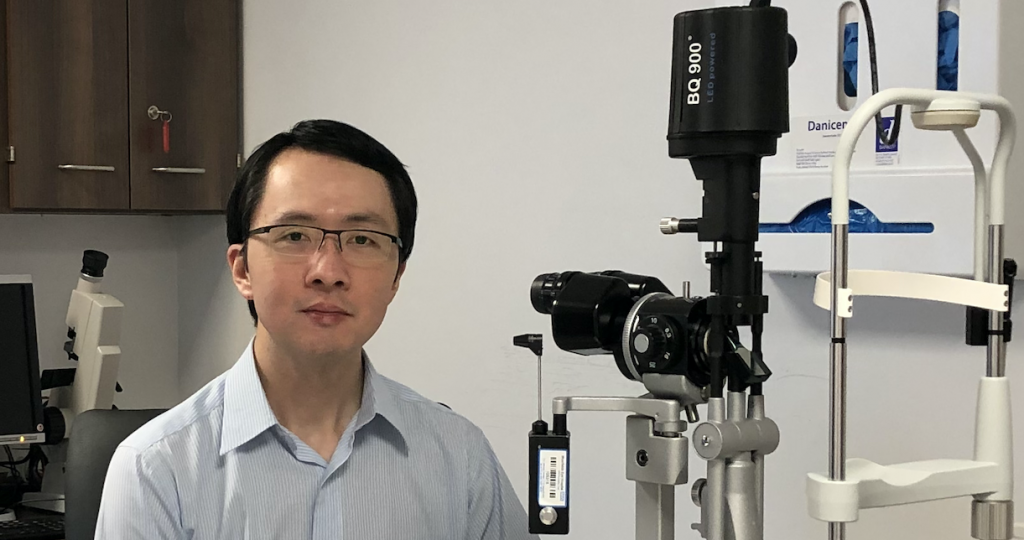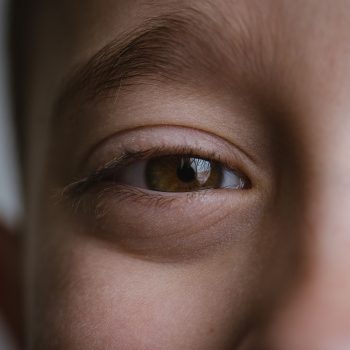Researchers eye up new gene therapy trial that could reverse hereditary blindness
Restoration of sight from a rare genetic mutation may now become a reality thanks to a prestigious award from the National Institute for Health Research (NIHR) and Moorfields Eye Charity.
NIHR Cambridge Biomedical Research Centre (BRC) researcher and Addenbrooke’s Hospital Honorary Consultant Ophthalmologist, Dr Patrick Yu Wai Man, has received an NIHR Moorfields Eye Charity Advanced Fellowship award from the NIHR, in partnership with Moorfields Eye Charity, to undertake research into inherited optic neuropathies, which are genetic diseases that affect the optic nerve, causing progressive and irreversible blindness.
A major focus of this ambitious research programme will be on Leber Hereditary Optic Neuropathy (LHON), a disease caused by a gene mutation in the mitochondrial genome that triggers rapid loss of vision in mostly young adults.
Dr Yu Wai Man and his team will run a new clinical trial at Addenbrooke’s Hospital in Cambridge and Moorfields Eye Hospital in London, to better understand LHON and whether gene therapy can help restore sight in some people affected with this condition.
LHON and mitochondrial blindness
LHON is caused by genetic mutations in the mitochondrial genome – a unique piece of circular DNA that we inherit from our mother. As a result, healthy cells in the retina are lost, leading to optic nerve damage and severe loss of vision to the point where the person is registered blind. There are currently limited treated options for LHON.
LHON is classified as a rare disease, yet it is estimated to affect at least 1 in 30,000 people in the UK. Although women and children can be affected, the majority of cases occur in young men between the ages of 15 and 35. Most people are unaware that they carry a LHON mutation until symptoms begin to develop with blurred vision or if a family member is diagnosed with this condition.
The reasons why LHON predominantly affects men and why it starts so abruptly remains a mystery. “Your eyes are the greatest camera you’ll ever own and this disease is a devastating blow to people,” explains Dr Yu Wai Man, pictured right. “You can go from being fit and well and then suddenly, within weeks, your vision deteriorates rapidly, and you are told you can be registered as blind.

“We know that this disease is hereditary and affects mostly young men. But there are still so many unanswered questions about this condition and we need to find out more in order to identify suitable treatments. Our recent research published in Science Translational Medicine is promising, indicating that patients with LHON who have experienced loss of vision for up to one year can benefit from gene therapy. We now want to focus on people who have had this condition for more than one year and that is the basis of our trial.”
Launching the trial
The trial will use a form of gene therapy (where a healthy version of the gene is inserted into cells of the retina using a harmless virus) in patients who have lost their vision between one to five years (chronic LHON). It will be hosted across two sites at Addenbrooke’s Hospital and Moorfields Eye Hospital.
Dr Yu Wai Man said: “We know the disease quickly kills off healthy cells in the retina and we want to try and bring as many cells as possible from the brink to prevent further sight loss and potentially improve vision. In the pilot phase, we plan to recruit 30 patients who will be split into two equal groups. One group will receive the gene therapy injections in both eyes whereas the second group will not receive the treatment. The patients will then be closely monitored over two years to see if the treatment improves their eyesight. If we are successful, this breakthrough could be life-changing and it will also provide hope to people with visual impairment from other genetic diseases that affect the optic nerve.”
Monitoring disease and patient outcomes
The gene therapy trial is part of a wider research programme aimed at better understanding how the disease progresses over time (natural history) and what factors (biomarkers) predict the visual outcome in the inherited optic neuropathies. Dr Yu Wai Man and his team will make use of the latest technology available within the Cambridge Clinical Vision Lab, which has recently been established and supported by the NIHR Cambridge Clinical Research Facility and funded by the NIHR Cambridge BRC, as part of its advanced therapies initiative.
“The inherited optic neuropathies have a major impact on quality of life that goes beyond loss of vision,” Dr Yu Wai Man explains. “The Cambridge team will also develop a patient-reported outcome measure (PROM) that will allow the lived experiences of patients to be captured. This new tool will provide a more accurate picture of whether someone’s disease is progressing over time and it will be very helpful for future treatment trials when investigating whether a treatment is actually working.”
Setting sights on further research
Dr Yu Wai Man’s innovative research programme on the inherited optic neuropathies will be made possible thanks to funding from the NIHR in joint partnership with Moorfields Eye Charity. Dr Yu Wai Man said: “Without this level of commitment for rare diseases from the NIHR, we wouldn’t be able to conduct this kind of trial to try and save people’s sight.
“As a clinical academic, an NIHR Moorfields Eye Charity Advanced Fellowship award is a fantastic opportunity. This award will allow me to carry out research which I hope will make a difference to patients, and it will give me the opportunity to work with other leading researchers to further develop my skills in conducting translational research.
“My aim is to drive forward a programme of research in genetic conditions that affect the optic nerve. I’m hoping that our work will help pave the way for more gene therapy trials for other eye diseases – sooner rather than later.
“I’m very excited about what we’re going to learn and achieve in the next few years working closely with patient organisations. We may not be able to restore normal sight 100%, but if we could improve vision enough to have a positive impact on someone’s quality of life, that is the most important thing.”
More information about LHON and the clinical trial
- The most common cause of LHON is the 11778 mitochondrial DNA mutation
- This genetic defect affects the amount of energy being produced by mitochondria, which are the powerhouses that fuel cell activity in the human body
- Affected individuals with the 11778 mutation who have lost vision between one and five years will be eligible to take part in this new trial



